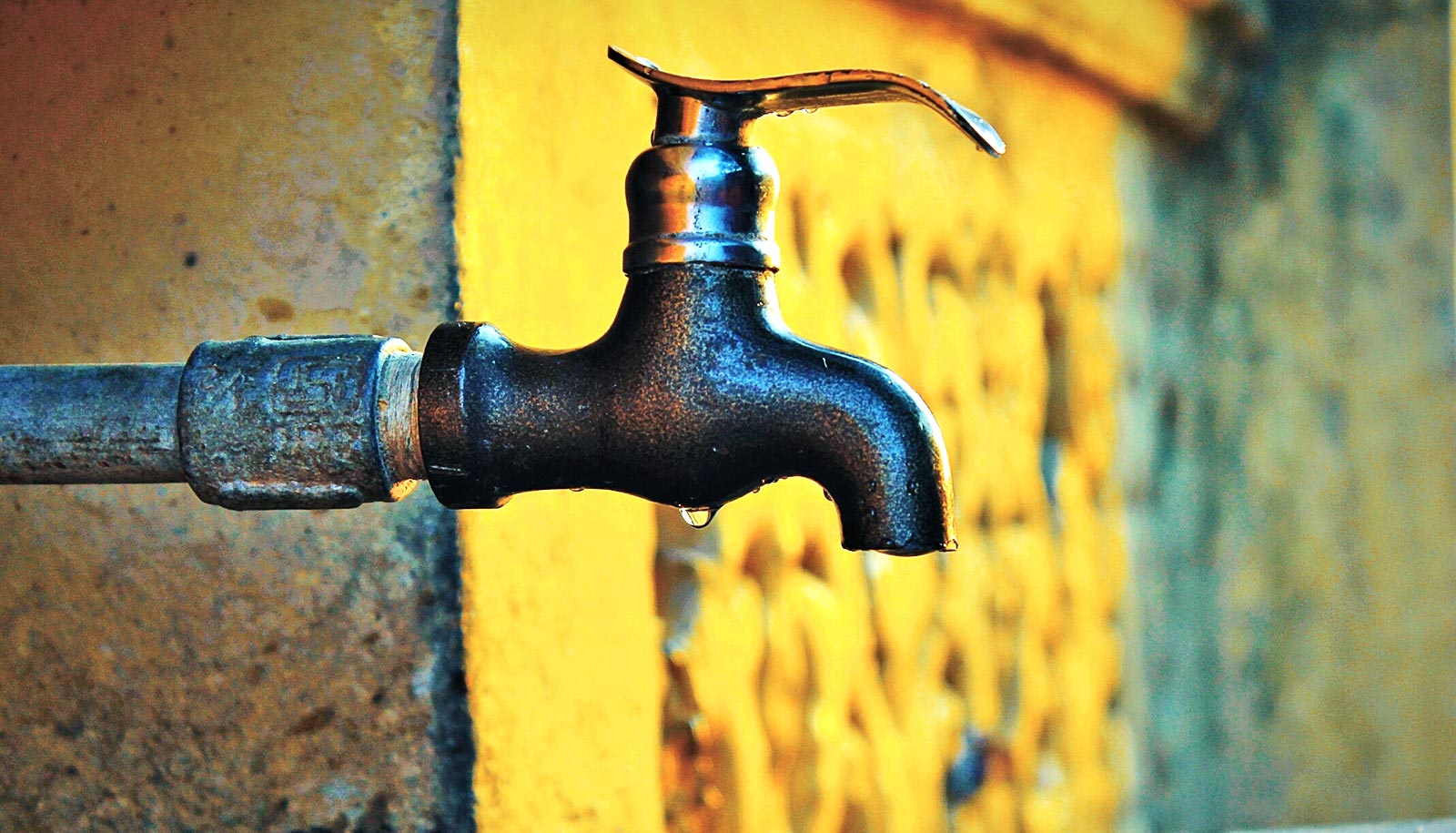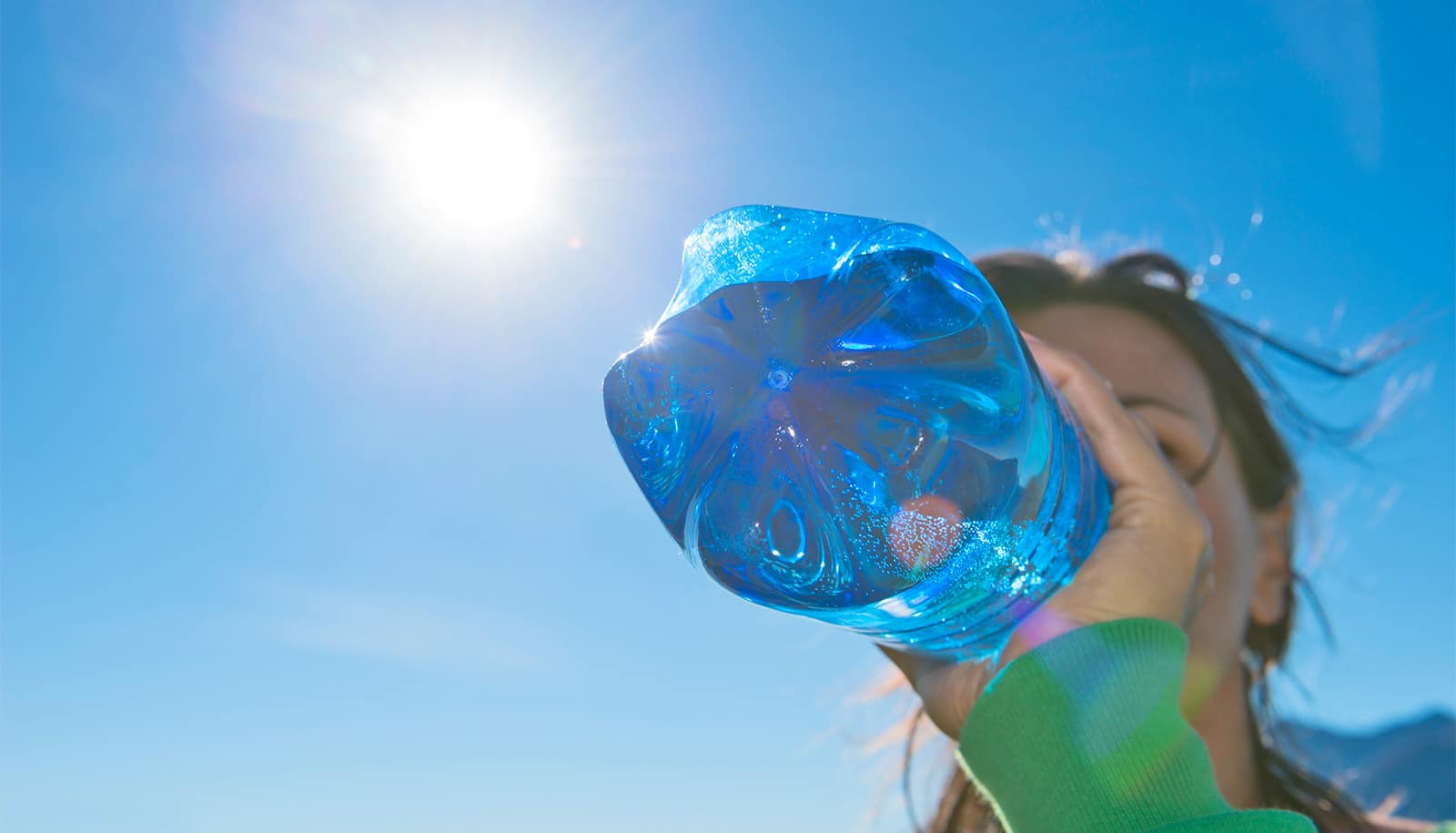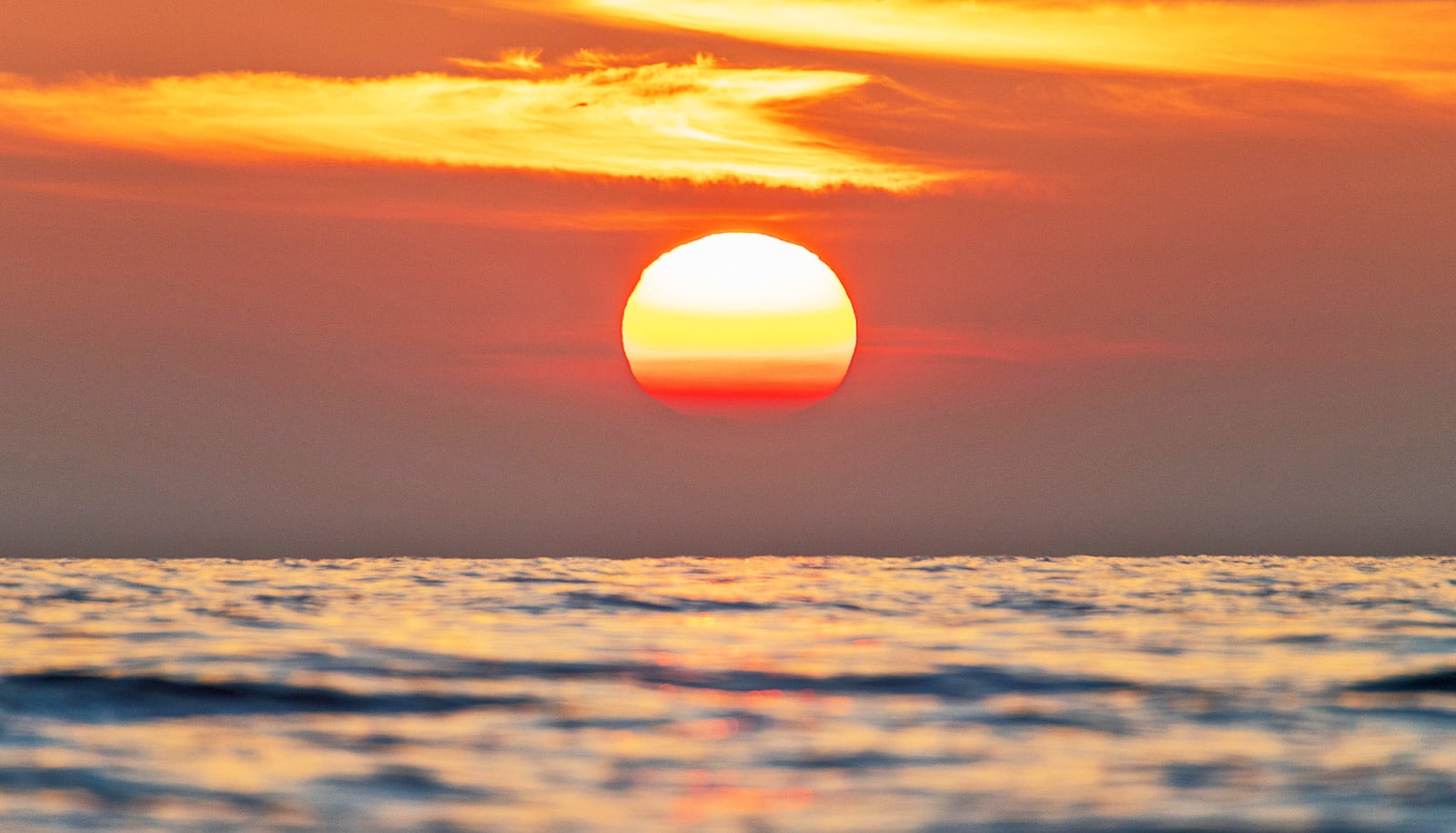Cape Town, South Africa—a modern city of nearly 4 million residents (plus over 1.5 million tourists yearly)—is on the brink of running out of water. In May, the city could be forced to cut off the vast majority of its taps.
Buzz Thompson, a water law expert at Stanford University, recently talked about how Cape Town got into this dire situation, what will happen on “Day Zero” (the day an entire city runs out of water), and if other cities face similar crises.
Experts are now predicting that Cape Town will run out of water in May. How did it get into this situation?
A variety of actors have conspired to put Cape Town in this grim position. To start, Cape Town is in the third year of one of the most severe droughts in the region’s history.
Everyone agrees that this is the worst drought in a century. One scientist at the University of Cape Town has even estimated that a drought this bad occurs in the area only once every 300 years. Unfortunately, climate change may be increasing the chances of a drought of this magnitude in the region.
Many cities, however, would have better survived a drought of this magnitude. At least two other factors have helped push Cape Town over the edge.
“Cape Town is ironically at greater risk because it has been excellent at conservation.”
First, Cape Town depends almost entirely on a handful of local reservoirs for its water supply, and all of these reservoirs rely on local precipitation. While many cities have multiple sources of water, Cape Town banks on only one. As any risk expert will tell you, that’s a recipe for disaster.
Second, Cape Town is ironically at greater risk because it has been excellent at conservation. Over the last several decades, Cape Town has been a model city in reducing its per capita water use. Indeed, Cape Town has won awards for its green water policies.
By saving water, Cape Town has been able to grow by almost a million people over the last decade without looking for new sources of water. This combination of conservation and growth, however, has “hardened” the local water demand.
When a city wastes a lot of water, the city can more readily survive a drought because there is plenty of opportunity to conserve. Cape Town, however, has reduced its per capita water use to a degree that makes it far more difficult for it to withstand long-term water shortages.
Has “Day Zero” happened before—a city running out of water? How will it play out?
If Cape Town gets to “Day Zero,” it will be the first major city in the world forced to cut off the vast majority of its taps.
In 2015, however, a serious drought in Brazil forced San Paolo to reduce its water delivery to some residents to just twice a week. When rains finally arrived, San Paolo was less than a month away from its own Day Zero. Many other global cities, such as Mexico City, face long-term water shortages that limit water deliveries to only a few hours each week.
While no major California cities ran out of water during the recent drought, some smaller, rural towns that were reliant solely on groundwater did. As the drought intensified, for example, farmers in the Central Valley pumped more and more groundwater to irrigate their crops.
This increased pumping lowered groundwater tables. Cities with shallow wells found their wells go dry. For example, the wells in East Porterville, a small town near Bakersfield, went dry in 2014, forcing the state to truck bottled water to city residents and forcing residents to go without showers and use grey water to flush toilets. East Porterville did not regain water until late 2016 when the neighboring town of Porterville extended its water supply system to those otherwise left high and dry.
No one is sure what will happen in Cape Town on Day Zero, except that the city will shut off most people’s taps. Local residents will then be able to pick up 6.6 gallons of water per day at one of 200 distribution sites that the city is setting up. (By comparison, the typical bathtub holds about 20 gallons of water. The average American uses 80-100 gallons per day.)
If Cape Town is successful, it will have pulled off an amazing administrative feat. One observer has estimated that each site will need to dispense water to people at the amazing clip of eight households per hour for 12 hours every day.
It also is not clear how successful the city will be at providing water to the elderly and the poor who may not be able to travel readily to the distribution sites. Some observers also have expressed concern about the risk of violence as hundreds of thousands of people descend on each site for their water supplies. To avoid violence, police and military will protect the distribution sites.
Despite these risks, however, I am fairly optimistic that the city will be able to meet people’s basic water needs. Historically, droughts have encouraged cooperation among local populations. The city, moreover, plans to keep water flowing to key facilities, like schools and hospitals, and to communal taps in the city’s impoverished townships (where a lack of water might lead to disease outbreaks). Richer residents of Cape Town are also arranging to have water delivered to their homes by trucks.
The largest impact on Cape Town is likely to be on its economy. All sectors of the economy rely on water. Cape Town, moreover, is heavily reliant on tourism, and the number of visitors already is declining in anticipation of water shutoffs. Stanford even has cancelled the spring quarter of its Bing Overseas Study Program because of Cape Town’s ongoing water crisis.
How might they get out of this crisis?
In the short run, Cape Town has turned to further conservation. As the risk of going dry became clear, Cape Town ordered people to limit their daily water use to 23 gallons per day (and ratcheted that limit down to 13.2 gallons per day starting February 1).
“Conservation, however, is only a short term answer. Unless it rains, Cape Town ultimately will run out of water…”
I have been receiving emails from the gym that I used when I lived in South Africa informing me of its restrictions. At the moment, the gym limits showers to 90 seconds and prohibits showers entirely after 3:30 in the afternoon.
As a result of these restrictions, Cape Town has been able to push off Day Zero by almost a month. Conservation, however, is only a short term answer. Unless it rains, Cape Town ultimately will run out of water in its reservoirs. Many residents, moreover, are not complying with the conservation requirements. Before February 1, Cape Town estimated that only about 40 to 45 percent of the residents were following the restrictions. Cape Town’s water website no longer lists percentage compliance, claiming that it is still evaluating compliance with the new, reduced water limits.
In the longer run, Cape Town is developing additional sources of water—four new desalination plants, two groundwater fields, and a new water-recycling facility. Cape Town, however, is constructing the new facilities in a crisis situation, increasing the facilities’ cost. All but two of the facilities, moreover, are behind schedule. The Cape Town website reports that two of the desalination plants are closest to being finished, but still are only 69% and 70% complete.
There is always the hope in the meantime that it might start raining. Cape Town’s rainy season begins in April and could bring welcome relief. Even if rain returns to the Cape, however, the reservoirs will take months to refill.
How much of the world’s population is currently facing drought—or extreme water shortages?
This century has seen severe droughts in many regions of the world, including South Africa, Somalia, Brazil, Venezuela, Syria, Australia, India, Pakistan, China, North Korea, and California. Year in and year out, droughts are among the worst natural disasters in the world for their impact on both humans and the economy.
Billions of people, however, face chronic water shortages. Water scarcity is defined in many ways. One recent study estimated that four billion people—two thirds of the world’s population—live in areas of severe water scarcity, defined as regions where water demand is double locally available water. Many of these areas, moreover, face significant population growth, which will further intensify the local water scarcity.
Do you expect the situation in Cape Town to be repeated elsewhere in the world?
The current crisis in Cape Town will almost inevitably repeat itself elsewhere. Because of geography, many cities in the United States and the world are highly or entirely reliant on local precipitation. In California, for example, most of the Central Coast, including Monterey and Santa Cruz, currently depend on local rainfall. Given climate change, moreover, droughts in the arid regions of the world are likely to become more frequent and more severe. Warmer temperatures, moreover, will raise evapotranspiration rates—increasing agricultural water needs and the amount of stored water lost to evaporation.
How often the situation in Cape Town repeats itself, however, will depend on how well dry regions prepare for the future. In California, for example, we are building new water recycling facilities, storing water in underground aquifers, and looking for ways to capture and store stormwater.
We also are constructing new desalination facilities, although the cost of desalination is currently prohibitively high for many cities. By diversifying our water portfolio, we are reducing the risk that we will face a future Day Zero of our own.
Are we still in drought here in California?
Governor Brown declared California’s drought to be over in April 2017. But water conditions do not look good for California in 2018.
As I just noted, the ridge is back and showing signs of resilience. The Sierra snowpack is only a fraction of normal. The US Drought Monitor indicates that portions of Southern California, including Santa Barbara and Ventura counties, already have returned to “severe drought” conditions, with the rest of Southern California in “moderate drought.” And unfortunately, Southern California is not alone. Most of the West, including virtually all of Arizona, Colorado, New Mexico, and Utah, are in moderate or severe drought.
Californians used less water with drought in the news
It’s far too early to know for sure whether 2017 was an aberration and 2018 will be another drought year. California depends each year on a handful of major storms from November to April for its water supply; these “atmospheric rivers” can carry as much water as the Mississippi River. At the moment, however, water conditions do not look promising.
The State may have popped the cork too soon in celebrating the end of the drought. Paleoclimate records indicate that California historically has suffered many lengthy periods when, despite occasional rainy years, the general condition was drought.
We saw wildfires last fall that devastated communities and took lives. These were followed by catastrophic mudslides in Southern California. Were these caused by the drought? And can we expect more?
Unfortunately, there is a natural connection among droughts, wildfires, and mudslides. The 2013-2017 drought created conditions that were ideal for the type of wildfires that rushed through Napa and portions of Southern California last year. It is not mere coincidence that 2017 saw the worst wildfires in California history.
The fires in turn destroyed root systems that normally would help hold back the flow of mud. So when the Santa Barbara area, which had already been hit by fire, endured heavy rains, deadly mudslides were the result. We have seen these three disasters follow each other before in California. And regretfully we will see them again.
Source: Stanford University



